Los Angeles City HISTORICAL SOCIETY NEWSLETTER
Volume 41, Issue 1 • Spring 2021

Volume 41, Issue 1 • Spring 2021
by Richard Ross
George Rodriguez has been a professional photographer since the 1960s. During those five decades, he has photographed some of the most famous movie and television celebrities of our time as well as rock stars and sports heroes. But Rodriguez has also documented the culture and political events of the Mexican-American community in Los Angeles. The result is a compelling body of work that reveals two very distinct views of Los Angeles: life on the red carpet and life on the streets. His work is a visual record of some of the seminal episodes in the city’s history: the Sunset Strip riots of the 60s, the Chicano movement of the early 70s, the United Farm Workers movement and the 1992 Los Angeles riots.
Earlier this year, we spoke (via Zoom) to George about his career and the social events he witnessed and documented in his work. (All photos courtesy of George Rodriguez, unless otherwise noted)
George Rodriguez was born in 1937. His parents met in Texas but they moved to Los Angeles not long after they were married. His father opened up a shoe repair shop near Skid Row in downtown Los Angeles and the family settled in South Los Angeles. George attended Fremont High School, where he first discovered photography... almost by accident.
GEORGE RODRIGUEZ: There was a guy, a friend of mine, and I needed an elective. And so I told him and he said, “Take photography. It’s easy.” So that’s what I did.
George enjoyed photography but, at first, it wasn’t really a passion for him but simply a way to make money. He soon got a job at a local film lab.
GR: I started in a photo lab when I was 15 and I was still in high school. I worked there after school. And so then when I graduated, I went to work full-time
One day in 1957, George had a chance encounter with legendary celebrity photographer Sid Avery.


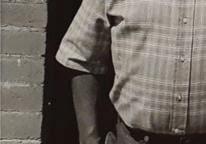
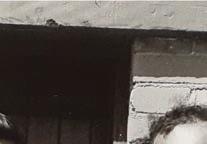
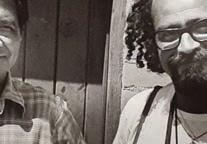






GR: I took a friend of mine, who was looking for a job, to Hollywood. And while he went to apply for this job, I parked in front of Sid Avery’s studio on Cahuenga. And I saw this guy inside the door way, setting up to take some photos, so I walked in and there was Sid Avery. And so I chatted with him and then he told me he was starting a color lab upstairs. So I went up and applied and I started working there on Cahuenga near Sunset.
continued on page 3
I hope 2021 is o to a good start for all of you. I feel like things are definitely looking up for Los Angeles and for the Historical Society.
I feel like we are really getting better at providing content for our members via the web. Our last several webinars have been very well attended. From time to time in the pre-Covid world we were occasionally faced with a glut of opportunities for presentations and not enough venues in which to present them. I feel as if webinars could become a regular part of our programing going forward.
But that being said, I am really looking forward to returning to in person lectures and meet ups in
the near future. We have several in the works just as soon as venues will permit, plus we hope to hold an annual meeting later in the year, to re-schedule the Marie Northrop Lecture Series, and to hold another Gala.
As we return to work and our more normal lifestyles I hope you all remain interested in Los Angeles history and in our society.
I look forward to seeing you all in person soon. Take care and thank you for your ongoing support.
Todd Gaydowski President
GEORGE RODRIGUEZ, continued from page 1
Working for Sid Avery opened up a whole new world for George.
GR: When I went to work for Sid Avery, I worked in the photo lab, but he also had me assist him. So I would go with him on shoots. I remember I helped him shoot Lucille Ball at her home.
This was George’s first encounter with the world of celebrity photography. It led to a brief job as a shipboard photographer for a cruise ship. Not long after returning to Los Angeles, George got a job at the film lab for Columbia Pictures.
GR: Columbia Studios could not a ord to run their own lab. So they closed it and this guy wanted to reopen it, and he asked me if I wanted to come and set up a photo lab and I was pretty naive, but I said, yeah. So, I was like 20, 21 and running a photo lab at Columbia studios on the Columbia lot.
While working at Columbia, George got his first chance to photograph celebrities on his own.
GR: The way I got started shooting red carpet stu , is that the real photographers would shoot the stars in the studios, but they would also get press credentials in the mail. And it would be beneath them to go show up on a red carpet somewhere. So they would give me their press credentials. I would go and I just loved it. I worked on speculation, I would shoot stu and then put a little package together and send it to the magazines. They rarely bought anything, but when they did it, it was a huge deal for me, you know, so that’s how I began.
George would spend the 1960s documenting some of the most famous movie stars and musicians of the era, including Lucille Ball, Frank Sinatra, Marilyn Monroe, Cary Grant, and Natalie Wood, as well as rock icons such as Elvis Presley, Jimi Hendrix, Johnny Rivers and Jim Morrison.
GR: I just loved it. You know, you’re kind of on the inside, but you’re on the outside, you know, I would be there.
Rodriguez was one of the first photographers to capture the nascent genius in a very young Michael Jackson.
continued on page 4
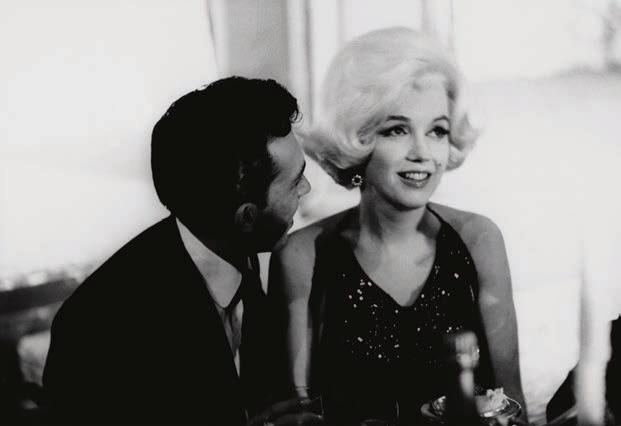
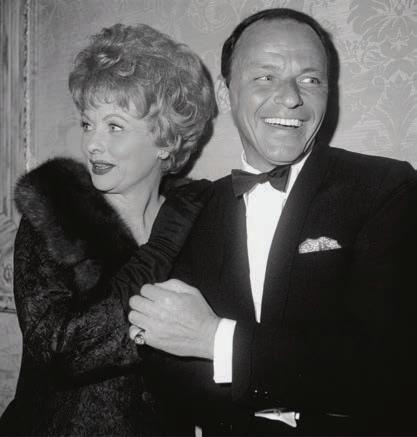
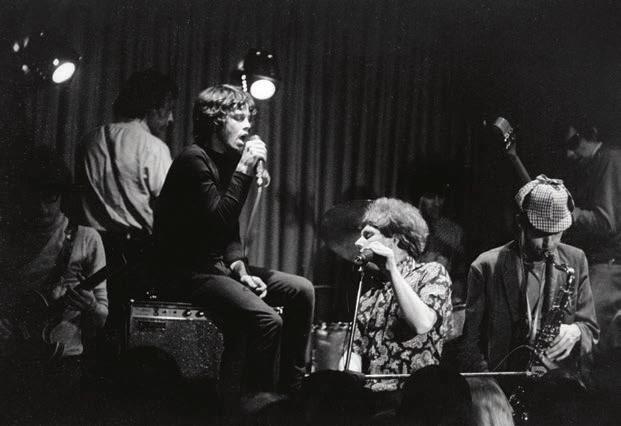

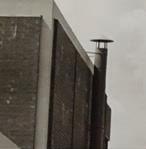
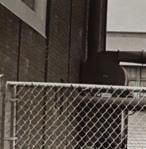



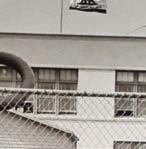

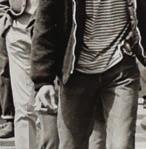

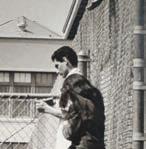
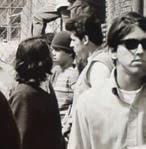



GEORGE RODRIGUEZ, continued from page 3
GR: I felt that this kid, Michael Jackson would be a superstar. And then from like, from that moment on, he was a big star.
But far from the glitz and glamour of Hollywood, there was a sea change brewing in the barrios of his home town. Inspired by the Black Power movement, the Mexican-American community had begun to organize. This became known as the Chicano Movement.
GR: When the Chicano movement began, I was really interested and I thought I should cover it because I felt I was sort of a part of that movement and I wanted to document it because I didn’t see anybody else doing it.
One of the most significant events during the early days of the movement was the school walkout in 1968 organized by high school students protesting the lack of educational opportunities for the Mexican-American community.
GR: I would be working at Columbia and, and there’d be walkouts in East LA at the schools. So I would leave on my lunch hour. I just felt that it should be documented and I could do it. Since I knew something was going to happen, I would just show up there and take pictures.
During the late 60s and early 70s, George continued to document some of the pivotal moments in the Chicano movement.
GR: When it’s happening, you don’t realize how important it is, but you do know that there’s something going on and so you want to document it, but I never realized that how important it would be later on.
One of his most notable pictures depicted a memorial march in East LA in honor of Robert F. Kennedy, Jr. the day after his assassination.
GR: Robert Kennedy had supported the Chicano rights movement, so his death really hit the community hard.
Security for the marchers was provided by The Brown Berets, a Chicano organization that believed in Chicano self determination and self defense of the community against racism and police brutality. Emulating the style of the Black Panthers, they sported brown berets and wore khaki uniforms.
continued on page 5
GEORGE RODRIGUEZ, continued from page 4
One photograph became an striking image for the movement: 16 year-old Chicana activist Hilda Reyes Jensen.
GR: She was a Brown Beret. Later on, that group of women formed their own group called Las Adelitas, because they were dissatisfied that the male members of the Brown Beret movement didn’t take them very seriously.
But photographing protests and police actions did not come without risks.
GR: It was kind of risky, you know, cause the cops don’t want you there, and then some older Latino people, they wonder who you are and that has to do with immigration and stu . I didn’t have like LAPD credentials or anything, so you would get it from both sides and it was like a real challenge.
The turning point for the whole Mexican-American Chicano experience was the Moratorium March in 1970 that was a protest against the Vietnam War because, people felt that there were so many Latinos dying in that war, and that got the attention of everyone because that turned into a riot situation and Ruben Salazar—he was a writer for the LA Times and the director at KMEX— died that day along with three other people. So that got the attention of everyone.
In 1968, George would encounter one of the most influential figures in the Chicano movement—Cesar Chavez, the leader of the United Farm Workers.
GR: People ask you, “Do you recall who your special subjects were?” being a photo journalist and there’s
continued on page 6




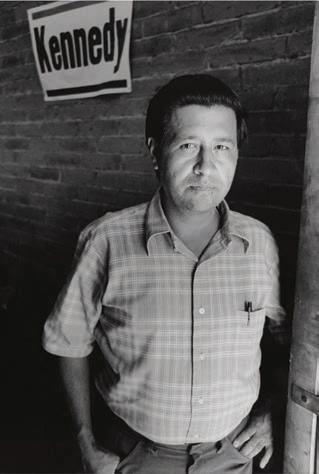
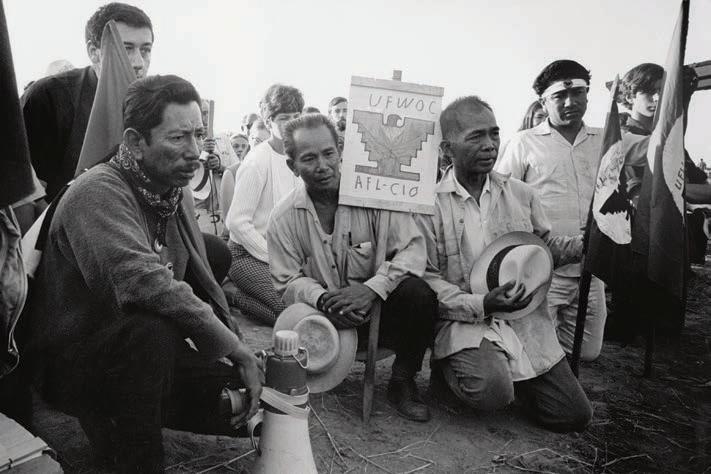
5
only about three or four, but definitely, Cesar Chavez would be one of them.
I kept hearing the word Cesar Chavez, and you know I had to somehow get out to wherever he was. And then I got an assignment from West magazine that was a supplement with the LA Times. And they sort of put me in a Mexican American bag and so anything related to Chicanos that I would do it for them. So anyway, they assign me to go to Delano to spend some time out there with the United farm workers.
The first moment I met Cesar Chavez, he thought it was surprising that somebody named Rodriguez would be coming from the LA Times, thinking that that time no Latino journalist was working there.
While in Delano, George was struck by the diversity and breadth of the UFW strikers.
GR: There were the great many Latinos, a lot of black people, not too many white people but definitely white people that were out there, demonstrating. It was a mixture of a lot of people that that’s something that’s so special to be there, in the midst of that, because of the people involved.
George is now retired but his body of work is being recognized as a critical artistic and historical resource. His photographs have been featured in numerous museums and galleries, including the Getty Museum, The
Natural History Museum of Los Angeles, The Grammy Museum, The Museum of Latin American Art, and The Los Angeles County Museum of Art. Several of his photographs are in the Smithsonian’s National Portrait Gallery collection in Washington D.C.
In 2018, The Double Vision of George Rodriquez, a book-length retrospective of his career, with text by Josh Kun, was published by Hat & Beard Press.
Looking back over his career, George admits he was fortunate that he came of age during a time when photographic journalism was both a profession and a calling.
GR: Photography takes you exactly where you want to be, maybe a movement or something that you will share with us, with people. I tried to document absolutely everything so that people that are not there can get an idea of what was going on, just to document everything so that you can tell a story, and make it as complete as you can.

By Michael Holland
The Los Angeles City Archives is still closed to the public as of May 2021. Email requests for records can be submitted and will be responded to as sta has time. Once the archive is allowed to reopen, there will be volunteer opportunities for MLIS or MARA graduate students to help them fulfill their experience requirements. I would expect that by the Fall 2021 semester, we will be ready for volunteers again.
The recent blog post by UCLA featuring the Malcolm X film footage is generating inquiries to
the archive. We thank UCLA for making the footage—originally digitized pre-pandemic in December 2019—available. We hope to have other film and video projects to discuss with you soon. Here is the link to the UCLA blog post: https://www.cinema.ucla.edu/blogs/archiveblog/2021/05/04/malcolm-x-press-conference ◆
Michael Holland is Los Angeles City Archivist and a member of the Los Angeles City Historical Society.
The LACHS has been getting questions about when the Marie Northrop Lecture series will be resumed at the Central Library’s Taper Auditorium. As the library reopens, the schedule of events should also begin to take. So right now it’s hard to say.
We believe that by January 2022, there will be a schedule in place for Taper events. One unknown at this time is a new audio-visual technician to take the place of recently relocated Russell Pyle. Russell was a large part of the MNLS success and his successor should be installed so the presentations you’ve come to
Volume 41, Issue 1 Spring 2021
Los Angeles City Historical Society Founded 1976
O cers
Todd Gaydowski, President
Charley Mims, Vice President
Lennart Christo erson, Interim Treasurer
Roberto Alaniz Jr., Secretary
expect will be there as before.
It has been customary to announce the new season of presentations at the Archives Bazaar in October. We will be expecting to announce whatever we know about the Taper at that time. The webinars that have taken place have been a great alternative and we hope that they will continue to be part of the events schedule for LACHS as we move into the post-pandemic world.
Thank you for your patience and we will be seeing you at the Taper Auditorium very soon. ◆
— Mike Holland, MNLS chair
Board of Directors
Clark Robins
Claudine Ajeti
Donna Friess
Geraldine Knatz
Jared Nigro
Lilly Morcos
Michael Holland. Nathaniel Calloway
Richard Ross
Newsletter
Richard Ross, Editor
Contributors: Donna Friess
Geraldine Knatz
Michael Holland
Design by Amy Inouye, Future Studio
LACHS • P.O. Box 862311 • Los Angeles, CA 90086-2311
For more information, comments and queries, please visit: https://www.lacityhistory.org/ We appreciate your feedback regarding our newsletter. Please submit any comments or questions to: Richard.Ross@LACityHistory.org
In early 2019, the LACHS Board approved a program to award scholarships to outstanding history graduate students at local universities and colleges. The Board recognizes the critical value of the study and analysis of history to our democracy and seeks to encourage outstanding students in the field.
The 2020 Scholarship awardees are:
• Abigail Calderon Garcia (Cal State University Los Angeles)
• Anthony Peña (Cal State University Northridge)
• Gavin Evans (Cal State University Northridge)
• Jocelyn Aguilera (Cal State University Long Beach)
• Moisés Ponce-Zepeda (Cal State University Los Angeles)
• Samantha Gelera (Cal State University Long Beach)
This past December, three of the 2020 scholarship winners presented their papers in a LACHS webinar. Two other awardees presented their papers via webinar on January 23, 2021.
All of the above papers are presented in full on the LACHS website: https://www.lacityhistory.org/ scholarship
Videos of the webinar presentations are on the LACHS website: https://www.lacityhistory.org/blog
We hope that LACHS members who wish to support the program will donate additional funds to the program. Please note that 100% of all donations will go to students.
Following are selected excerpts from two of the papers that were presented on January 23, 2021. ◆
by Anthony Peña
On May 9th, 1972, Benning Alan Richardson called the Los Angeles Police Department to arrest his wife. He told dispatch that she violated the city’s anti-street vending ordinance. His wife, Lois Jean Richardson, was selling flowers on a sidewalk in Glendale. Police did not arrest Lois, but she received a citation, and they requested her appearance at the Glendale Municipal Court two weeks later. The Police confiscated the flowers for evidence against her violation.
After speaking with Benning, the police concluded that he was testing the new ordinance because he was confused about the regulations in the city. According to the police, he claimed he held leases on multiple corners and that he had a city-approved vendor’s license. However, his license was suspended by the city in a letter sent to him. The ordinance passed after Los Angeles City Council voted in favor of local businesses that complained about losing clientele to weekend vendors. Many small business owners believed that street vendors held an unfair advantage because they did not pay taxes like businesses. The bizarre story of
the Richardsons in Glendale is reflective of the history of street vending in the Los Angeles metropolis. Why would someone who is a successful street vendor and has a firm understanding of the region and its laws send his wife to test them? The answer is because street vending has a unique history in Los Angeles.
Presently, Los Angeles is the food truck capital of the world, but the history of street vending has been unfavorable for vendors in Los Angeles. When California achieved statehood into the United States in the mid-nineteenth century, Los Angeles was not the cultural and economic juggernaut that it is today. However, transportation advancements in the 1870s led to the growth of the city and attracted Mexican and Chinese immigrants who chose to sell foods and goods on sidewalks.
There are four significant eras of street vending in Los Angeles. The first commenced in the 1870s, the second wave kicked o in the 1920s, the third wave resparked street vending in the 1980s and saw the most continued on page 9
SIDEWALK WARS, continued from page 8
opposition, and lastly, President Trump’s successful presidential nomination ushered in the current wave in 2016.
The early vending history of Los Angeles primarily consisted of Mexican immigrants that sold tamales. The growing presence of street vending collided with opposition in the form of regulations that attempted to restrict or ban them.
However, these e orts failed because street food was immensely popular. The influx of Mexican immigrants in the early 1920s led to the formation of a downtown enclave for street vendors. The rise of the automobile culture in Los Angeles chipped away at the popularity of street vendors because people interacted less with sidewalks. Recent literature states that in the 1930s, street foods were trendy in Los Angeles and more so in the 1940s because of more e cient connectivity to di erent ranges of the city thanks to railroad advancements. However, the following three decades experienced a decline in the popularity of street food and, consequently, its viability to make money because of the automobile and rise of fast food.
The influx of Latin American immigrants that arrived in the 1970s cultivated the third and most controversial wave of street vending history in Los Angeles.
ice cream trucks. Shortly after, Mayor Bradley vetoed this decision.
One of the critical changes in street vending culture during the 1980s was the economic opportunities that it o ered Latina immigrants. Food vending became a popular means to achieve income for first generation Latina immigrants that migrated to the Los Angeles metropolis.
The benefits of street vending for women were expertise, being self-employed, no language barriers, choice of hours, working in proximity to their neighborhood, and time o in the case of emergencies. Street vending emerged as a popular economic solution for Latina women that migrated to Los Angeles.


Backlash against street vendors varied throughout the city but the most common complaints about street vendors were that they increased tra c and the amount of trash in communities. Increased tra c was a common complaint, especially towards food vendors because they drew large crowds, parking became scarce, and typically, vendors occupied busy streets to maximize profits.
On August 20th, 1974, Los Angeles city council voted unanimously to ban street vending. The only exceptions made for this ordinance were food and drinks for immediate consumption from catering and
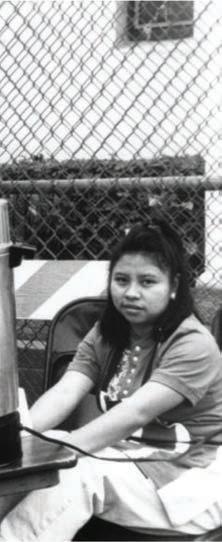
At any given time throughout the 1980s, there were upwards of three thousand street vendors in the city, without accounting for part time vendors.
There was a robust anti-vending police campaign in the late 1980s. The creation of the Police Department’s Illegal Vending Taskforce led by Bob Lamont illustrates the strong resentment towards Los Angeles street vendors.
By the end of the decade street vendors in Los Angeles faced unprecedented backlash which resulted
continued on page 10
SIDEWALK WARS, continued from page 9
in constant interactions with police but there was an increasing amount concern for public health. In 1987 Los Angeles launched city wide sweeps against illegal street vendors.
By 1992, the politics of street vending in Los Angeles experienced a new episode defined by compromise. It became apparent that street vending was increasing in popularity for consumers and as a form of income for immigrants that struggled to find employment. Simultaneously, backlash from business owners, homeowners, residents concerned with the cultural changes that mirrored Latin American cities, and public health o cials. Both groups begun discussions to agree on the
street vending question in the city. The willingness to compromise is evidence that city o cials warmed up to accepting street vending as a staple of Los Angeles’ urban culture, whether they wanted to or not.
In 2014, the Los Angeles Times reported that upwards of fifty thousand vendors were operating in Los Angeles’ informal economy. Furthermore, street vendors accounted for five hundred million dollars of revenue. The number of vendors and the revenue they generate are evidence of a prominent street vending culture. ◆
To read the entire paper, please go to the LACHS website: https://www.lacityhistory.org/scholarship
by Gavin Evans
In 2019, 59,000 people lacked permanent housing in Los Angeles County, classifying them as homeless. That number is up 12% from the previous year in a trend that has been rapidly increasing over the last 25 years. The situation has gotten so dire that at least 1,000 people a year are dying as a direct result of living on the streets of one of the wealthiest and most picturesque cities in the world.
Like any major city, Los Angeles has always had a homeless presence. The infamous Skid Row has been a fixture of LA’s homeless community since the early 20th century, but it wasn’t until the 1980s that homelessness began to increase at an alarming rate. Following a global trend, a decline in skilled manufacturing jobs coincided with an increase in low-skill, low-wage work which was primarily filled with immigrant labor. As a result, the poverty level in the city grew from 8% in 1969 to 14% in 1987.
At the same time, the Single-Room Occupancy hotels that had been relied on by the city’s unhoused began to be torn down to make way for commercial development, and federal housing subsidies began to decrease significantly. No new public housing units were constructed in Los Angeles during the 1980s at a time when rent-poor households were struggling to keep up with the rising cost of housing. At the same time that the number of unhoused residents in Los Angeles was
increasing, funding to programs targeted at helping the poor was cut by 57 billion dollars. Lack of funding to welfare systems coincided with the closure of the nation’s mental health institutions and the explosion of the crack epidemic, leaving jails as the main institutions tasked with providing for people with mental health problems. The increase of low-income families fighting for a diminishing amount of housing and welfare services, and an increase of people with personal vulnerabilities without appropriate institutional guidance resulted in the explosion of the homeless crisis in the 1980s.
The underlying causes of the rise of homelessness in the 80’s have only intensified over the last 30 years. The cost of living in Los Angeles has far outpaced the minimum wage, leaving 40% of Angelenos below the poverty rate as of 2004. In addition, people living near or below the poverty line are usually low-income workers who do not earn a pension and are unable to a ord healthcare, leaving them more susceptible to the life circumstances that could propel them into homelessness. The housing market in Los Angeles has continued to get more competitive, and the number of a ordable rental units has declined dramatically. Historically, public policy and the public attitude towards homelessness in Los Angeles has gravitated continued on page 11


Homeless Encampment, Alvarado Street underpass, 2021 (Photo courtesy of Kym Ghee)
REFRAMING A CRISIS, continued from page 10
between compassion and hostility. Unfortunately, the punitive policies available to those willing to advocate for them are both more immediate and easier to enforce. In e ect, punitive policies involve either shu ing the homeless from one location to another as public tolerance allows, or doing nothing at all. Emergency shelter beds have been a good start to compassionate solutions, but so far have not been met with the amount of required supportive housing, permanent a ordable housing, treatment services, job training, and other social services necessary to keep people o the street for good.
The social service industry has largely been concerned with short-term solutions to appease the enforced punitive measures which please home and business owners a ected by the presence of the homeless with little regard for helping the homeless themselves. Police simply cannot force people into shelters, especially when the available shelter space does not exist. The fact is that these punitive measures and the weak social service responses to them have failed both the homeless and housed citizens of Los Angeles, and highlight the need to pivot to public policies based on compassion for the unhoused and near-homeless.
Since the 1980s the cost of living in Los Angeles has far surpassed the minimum wage of $13.25 an hour, but with a competitive employment market, many are forced to survive on what is essentially less than the minimum required to thrive in the city. Despite the common sentiment among advocates for
“boot-strap” solutions to homelessness, employment alone is not sucient to keep people o the streets. Currently, it is estimated that 16% of homeless adults in Los Angeles work, and that in the two years prior to becoming homeless, three-quarters had worked consistently for more than one year.
For those trapped in the cycle of homelessness, an increase in both employment opportunities and income in general is a necessity. Targeted recruitment to the homeless for county jobs is a start, especially considering that government work pays a substantial amount more than the minimum wage, and includes a range of benefits from healthcare to pensions that are also sorely needed by the unhoused. As the county is the agency doing the vetting and providing the employment, no subsidizing or coaxing of private employers would be necessary. Although the available job pool is likely small, the ease of coordination and commensurate pay and benefits would make this a coveted position for the homeless population.
Indeed, thoughtful engagement is what is absolutely essential from every Angeleno in order to resolve the humanitarian crisis of homelessness in Los Angeles. A ordable housing, increased employment services coupled with wage reform, and a robust and coordinated response to the healthcare needs of the unhoused can only be accomplished with a conscious shift in how the public views the issue of homelessness. For many, homelessness simultaneously happens right down the block but far away from their own experience. It is critical to begin to think of those su ering from homelessness as though they were neighbors, because for many, they truly are. When the crisis is reframed as something that happens to “us” rather than “them,” Los Angeles can begin to live up to its reputation as one of the world’s great cities. ◆
To read the entire paper, please go to the LACHS website: https://www.lacityhistory.org/scholarship
by Samantha Gelera
The Zoot Suit riots were a series of altercations in early June, 1943 between American servicemen and mostly Latino youths in Los Angeles. The servicemen targeted the Mexican-Americans who wore zoot suits, flamboyantly extravagant suits with high-waisted, wide-legged pegged trousers and long coats with wide lapels and wide padded shoulders. The ostensible reason for the attacks was that the servicemen considered the outfits, which were made from large swatches of material, to be wasteful and unpatriotic during wartime rationing, but the root causes were really a conflict of cultures— the Mexican-American and the “Anglo” White cultures.
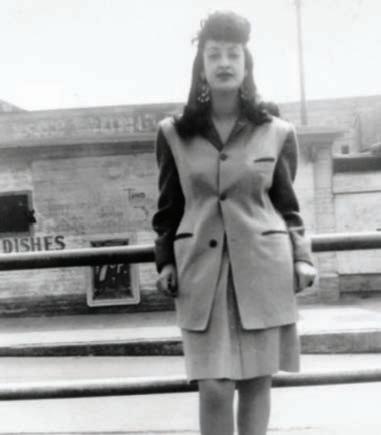

The Zoot Suit Riots defined the moments that stirred conflicts between zoot suiters and servicemen in Los Angeles, California. It is a rebellion in which Mexican-American youth fought against racialization and criminalization.
The Zoot Suit is a cultural symbol of sorts, it is an icon that intrigues the people of today to question its origins. While there is no absolute beginning, there have been speculations associating the Zoot Suit with American popular culture. Ethnic historian Luis Alvarez breaks down the origins into three fascinating theories: Clark Gable’s rendition of Rhett Buttler wearing coattails in Gone with the Wind; black jazz artists such as Cab Calloway donning the outfit in the 1930s and early 1940s; and migrants bringing in elements of pachuco culture from El Paso, Texas. The Zoot Suit was stylish for minorities in the West and East Coasts, however, there were wartime restrictions on clothing that marked it as an extravagant item. Social historian Stuart Cosgrove explains the wartime rationale in


underlining the War Production Board’s prohibition on suit manufacturing and most tailoring companies abiding this regulation. This outlandish style did not prevent Mexican-American youth from expressing themselves.
Next, the Zoot Suit culture was created for those that did not have the dominant say in society. Borrowed from elements of African-American culture, it appealed to other minorities and especially, lower-class adolescents. Chicano historian Mauricio Mazón writes that the Zoot Suit was provocative and politically influential, while in 1943, child psychologist Fritz Redl argued that zoot suiters anticipated adulthood through pleasure, rejecting adult values, and wandering from adult supervision.
The outfit’s social meaning attests to the di ering attitudes in Los Angeles society. Chicano historian Edward J. Escobar stresses the relations between Mexican-American youth and white Angelinos: the
continued on page 13
THE ZOOT SUIT RIOTS, continued from page 12
Zoot Suit represented a rebellion against racial discrimination, Mexicans were not supposed to have the same rights as whites, and the police’s role was to subordinate them into invisible, timid figures. His argument highlights the Mexican youth’s decision to combat social norms through a symbolic performance, wearing the Zoot Suit in the public setting.
The pachuco is a masculine figure of Zoot Suit culture, symbolizing adolescence and defying conformity to traditional styles of male clothing. Mazón compared the pachuco’s identity to a servicemen’s, analyzing their membership in elite groups that featured distinct lifestyles from the average civilian. Serving in the U.S. military during wartime was a rite of passage, similar to a pachuco gaining awareness of the intense racial discrimination that undermined his worth. Alvarez attributes these identities to expressing masculinity and distinguishes the white serviceman’s attire as displaying patriotic ideals, nationalism, and not o ending the war production. During the Riots, the Los Angeles Times focused on how in many cases, an estimated fifty zoot-suit wearing youth had been beaten and stripped of their clothing.
Politically, the Zoot Suit represented an attempt to challenge imposed expectations for how Mexican-Americans were expected to act and portray themselves. In April 1942, American journalist Lee Shippey of the Los Angeles Times investigated the circumstances surrounding servicemen and zoot suiters.
All things considered, the Zoot Suit subculture received both positive and negative reinforcement in wartime society. Pachucos and pachucas brought this style into existence, alarming critics and older Mexican Americans. Likewise, these figures demonstrated how an outfit empowered them into embracing consumer culture. Controversially, the Zoot Suit raised questions of true American identity and loyalty to one’s country during a period of rationing. The socio-political factors dictated whether the Zoot Suit’s presence would be welcomed or opposed. To the Mexican American youth, this style presented a social statement and deliberately represented individualism. The previous generation believed that this style worsened perceptions of the Mexican American community altogether.
Systematically, the problematic criminal justice system jeopardized the lives of the accused and unanimously altered the public’s perception of viewing them as respectable citizens. Mazón distinguishes the Sleepy Lagoon Trial as a civilian hate object in which those on the home front, occupied with thoughts of Nazi or Japanese invasion, generated public paranoia. In January 1943, it seemed that the grand jury had kept these notions, influencing the final verdict, and resulted in the indictment of seventeen defendants.
After the verdict, the Citizens’ Committee for the Defense of Mexican-American Youth (or the Sleepy Lagoon Defense Committee) sought to challenge the prosecution in their report, The Sleepy Lagoon Case. These members included Mexican workers, community leaders, and Communist party leaders openly speaking about racial and juvenile delinquent issues, contrasting the LAPD o cers’ statements during the trial.
In the early summer of 1943, white servicemen entered the social spaces that encompassed neighborhoods of Mexican-American influence. Away from Mexican residential communities in the Chavez Ravine, the Naval Reserve Armory held stationed Navy servicemen whose intrusive presence bewildered nearby residents. These men had traveled to an ethnic environment, noticing cultural di erences that would prolong their fascination with the highly unusual. On the verge of the Riots’ outbreak, Arthur Arenas recalled his horrific experience in a movie theater in downtown Los Angeles. The lights turned on in the theater when sailors barged in and started “beating the heck out of Mexicans” for wearing peculiar clothing. In a state of commotion, the sailors perpetuated the social tension and worsened the cases of violence within the next couple of days.
The Zoot Suit itself presented an opportunity for those to express individuality but at the cost of their safety and social acceptance. Racial discrimination continued throughout Repatriation and into the early 1940s, labeling Mexican Americans as undesirables. These causes exposed socio-political factors that dominated Los Angeles. The Zoot Suit Riots were violent, emotionally and physically, due to a series of major causes. ◆
To read the entire paper, please go to the LACHS website: https://www.lacityhistory.org/scholarship
by Geraldine Knatz, LACHS Board Member
The following article is by LACHS Board Member
Geraldine Knatz and appeared previously on the LACHS website blog.
After construction of the San Pedro breakwater was completed in 1912, Los Angeles outer harbor was used to support U.S. naval operations. As early as 1913, submarines would berth along the San Pedro waterfront. But it was not until 1914 that the Harbor Commission allowed the Navy the use of City Dock No. 1 and part of its transit sheds as a temporary base for submarines.
Once the Navy got onsite, however, they expanded to take over much of the pier, transit sheds, including space inside Warehouse No. 1. In some ways, it was a blessing in disguise. With the advent of World War I, ship owners who normally would have brought cargos to Los Angeles were tempted by lucrative o ers to shift their vessels to the East Coast trade where the demand was greater. The City of Los Angeles has built its first municipal pier, City Dock No. 1, to handle all the anticipated trade coming through the Panama Canal. But the pier and its Warehouse No. 1 sat empty. With little activity, the city was keen to support the U. S. Navy and its continued operations during World War I. Ultimately the Naval facilities on the City Dock No. 1 included not only the submarine base but a submarine training school, a reserve facility, a hospital, barracks, a YMCA and a post o ce.
Other cities did their best to try and lure the sub-



USS R-7 Submarine, launched in 1919, on maneuvers with Palos Verdes Hills in the background. (photo courtesy of Joe McKinzie)
marine base out of San Pedro to their own harbors. By November 1918, when World War I ended, only four hundred men were left of the 1400 that were there the year before. The facilities were turned back to anxious harbor o cials hoping for a post-war boom in tra c. Los Angeles o cials and businesses wanted to keep the base permanently. In Los Angeles and the Los Angeles City Council approved use of 146 acres of submerged land for the Navy to construct a permanent base closer to Cabrillo Beach. But Los Angeles had little clout on the key Congressional committees at that time. The base was moved to San Diego and the submarine training school went to New London (Groton), Connecticut. The last mention of the San Pedro base in o cial naval orders was 1929.
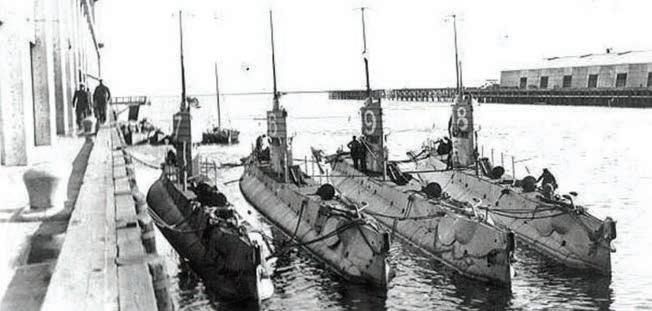
The image of a submarine popping up in the waters of the Port during WWI and the use of the outer harbor by the U.S. Naval fleet was a signal to harbor area residents that Los Angeles Harbor would continue to play a strategic role in military conflicts. Despite the loss of the submarine base, the military presence in Los Angeles Harbor would remain. ◆
by Donna L. Friess, Ph.D.
LACHS Board Member Donna L. Friess remembers her grandmother, a trailblazing pioneer in the early days of Los Angeles television.
I recall how nervous I felt the day in 1951 when my eight-year-old self reluctantly appeared on my grandmother’s weekly children’s TV show!! Today I realize that she, Vera May Lewis, was a pioneer in television!
I found a photo of her on the set of The Playcrafters Club. It aired on Channel 5, KTLA, Thursdays at 5, from 1950 through 1955. According to the Los Angeles Mirror (1955), Playcrafters Club was the oldest educational children’s program on the West Coast. My grandmother was breaking new ground. Today there are hundreds of programs for youth, but back in the early days of TV in the late 40’s and early 1950’s, the pickings were slim, relying heavily on local programming. This local show was sponsored by the Los Angeles County Department of Parks and Recreation.
As a Senior Recreation Director, my grandmother was assigned to host it. It was a 30 minute craft show where various local children modeled creating crafts for those at home.
Today our devices allow us to watch anything at anytime, nearly anywhere!! Today 98% of Americans have televisions. Back in the beginning it was far different. The only national program for children was the Howdy Doody Show on NBC which aired from December 1947 until 1960. By 1956 The Mickey Mouse Club aired intermittently for 40 years and soon others such as Lassie, Hopalong Cassidy, and Roy Rogers appeared.
I am proud of my grandmother, Vera May Cooper Lewis. She was born in Los Angeles in 1901 and after marriage and motherhood majored in Speech and graduated from the University of Southern California in 1929. She modeled possibilities of what women can do for me.

During the pandemic, the Los Angeles City Historical Society has hosted a number of webinars.
Upcoming webinars include:

The Golden Age of Hollywood Through the Lens of Joe Ackerman
A Talk with Julie (Ackerman) Anderson Wednesday, June 2, 2021 @ 7:00 PM
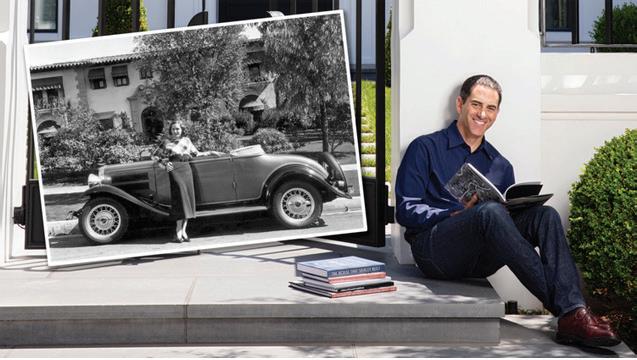
A Peek Inside Legendary Hollywood Estates: A Virtual Tour with Author and Architectural Historian David Silverman Tuesday, June 29, 2021 @ 4:00 pm
To register for these free events and to get more information, please visit our events page: https://www.lacityhistory.org/events.
Recordings of past webinars can also be found at https://www.lacityhistory.org/blog
• A Talk with George Geary CCP: L.A.’s Legendary Restaurants (May 6, 2021)
• A Talk with John Bengtson: Silent Footsteps Across Los Angeles (April 20, 2021)
• A Talk with Kelly C. Wallace: The California Index at the Los Angeles Public Library (March 18, 2021)
• A Talk with Alison Rose Je erson: Black Migrations to Los Angeles and the Development of the Popular Music and Dance Scene in the Early Twentieth Century (February 24, 2021)
• LACHS 2020 Scholarship Presentations—Part 2 (January 23, 2021)
• A Talk with Jared Nigro: The Day the Captain Almost Dropped in for a French Dip—The Story of Santa Fe Number 19’s Famous 1947 Crash at Los Angeles Union Station (January 13, 2021)
• LACHS Scholarship Presentations—Part 1 (December 5, 2020)
• A Talk with Alison Rose Jefferson: Black Leaders of Leisure and the California Dream during the Jim Crow Era (November 18, 2020)
• A Talk with Christina Rice: Los Angeles Public Library Photo Collection (October 22, 2020)
• A Talk with Dr. Geraldine Knatz: A Century of Marine Science at the Port of Los Angeles (September 24, 2020) ◆
The online LACHS photo collection is available to search at https://lacityhistory.pastperfectonline.com/ Other useful resources are available on our web site as well: https://www.lacityhistory.org
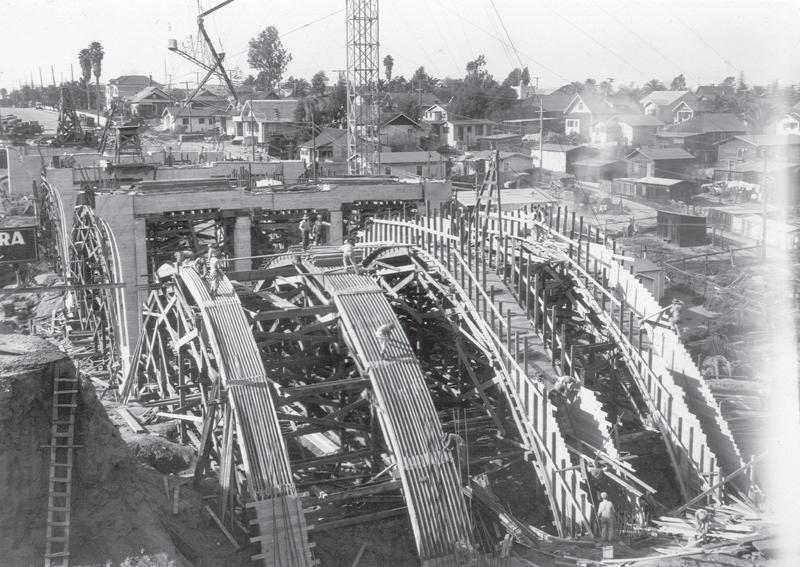
YES! I would like to become a member of the Los Angeles City Historical Society!
Membership Application
NAME
ADDRESS CITY STATE ZIP
PHONE
E-MAIL ADDRESS
Check your choice of membership:
[ ] $35 Student / Senior
[ ] $45 Individual
[ ] $60 Family / Dual
[ ] $95 Supporting
[ ] $700 Life
[ ] Scholarship donation $_____________ (all proceeds will fund history students)
Membership Benefits Include:
• Lectures by historians and authors at the Los Angeles Central Library’s Mark Taper Auditorium
• Field trips to historic sites
• Membership on committees
• Advance notification of special member programs
• Tour of the Los Angeles City Archives
Print application and mail with a check, or sign up online at https://www.lacityhistory.org/membership LOS ANGELES CITY HISTORICAL SOCIETY • P.O. Box 862311 • Los Angeles, CA 90086-2311